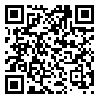BibTeX | RIS | EndNote | Medlars | ProCite | Reference Manager | RefWorks
Send citation to:
URL: http://irje.tums.ac.ir/article-1-5394-en.html
Background & Objectives: The aim of the study was to determine age, period, and cohort effects on trend of alcohol and drug use in the students of Tehran University of Medical Sciences from 2006 to 2009.
Methods: Between 2006 and 2009, the students of Tehran University of Medical Sciences were surveyed annually using a structured self-administered and anonymous questionnaire. Intrinsic estimator, which is a new method for resolving linear dependency between age, period, and cohort in linear regression models, was used for data analysis.
Results: In the present study, in the descriptive method, the prevalence of alcohol consumption increased in males and females with an increase in age. The prevalence of illicit drug use was higher in 2007 in comparison with other periods for males and females. In the analytical method (intrinsic estimator), there were no age, period and cohort effects for alcohol and drug use for females. For males, the age effect exhibited an increasing-decreasing-increasing trend and period and cohort effects showed a decreasing trend for alcohol use. As for drug use, the age effect exhibited gradual increases. The period effect displayed an increasing-decreasing trend and the cohort effect exhibited an increasing-decreasing-increasing trend.
Conclusion: The IE method showed no age, period and cohort effects for alcohol and drug use in females. The prevalence of drug and alcohol use increased with an increase in age in males. The high prevalence of drug use could be due to easy accessibility and low price of drugs.
Received: 2015/11/22 | Accepted: 2015/11/22 | Published: 2015/11/22
| Rights and permissions | |
 |
This work is licensed under a Creative Commons Attribution-NonCommercial 4.0 International License. |





